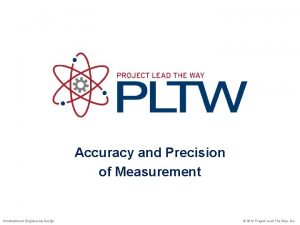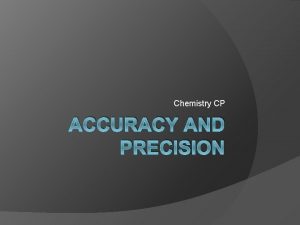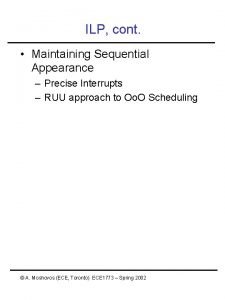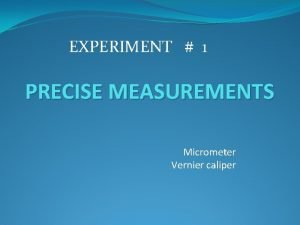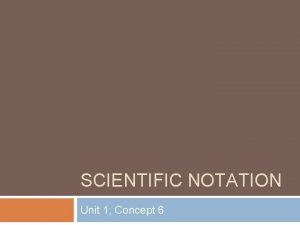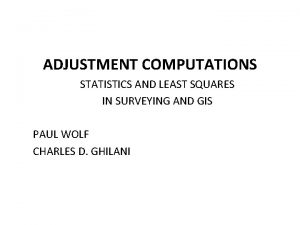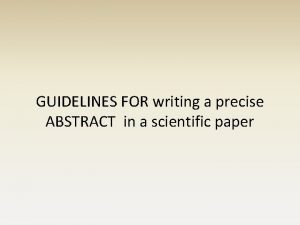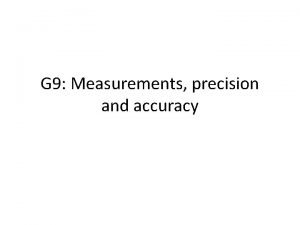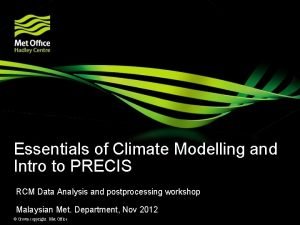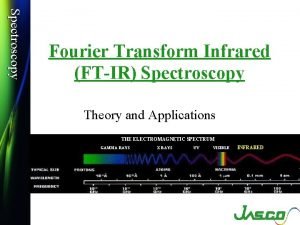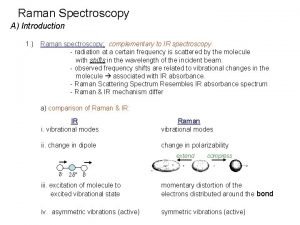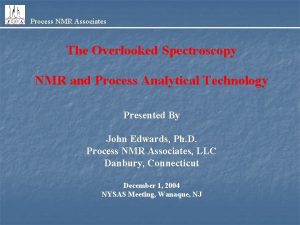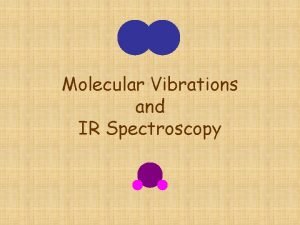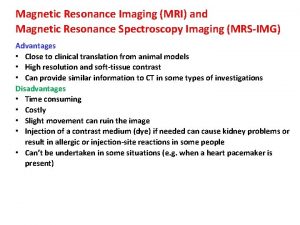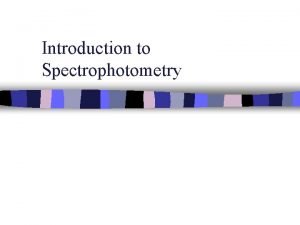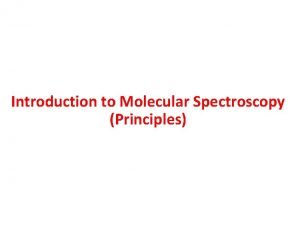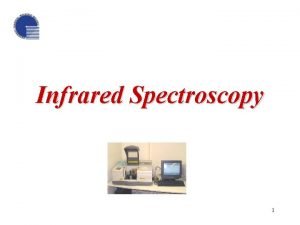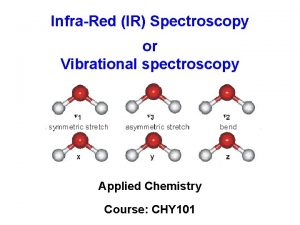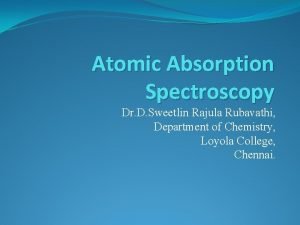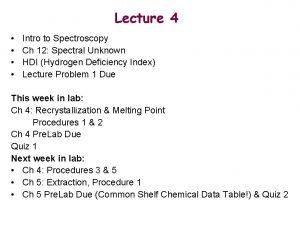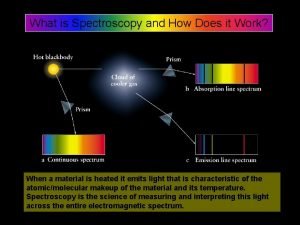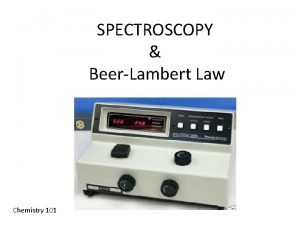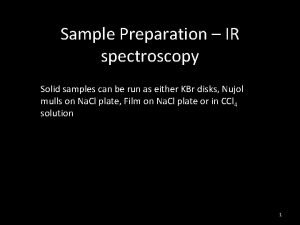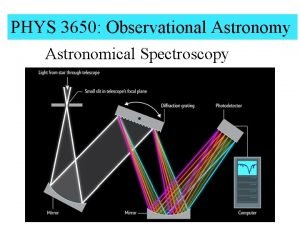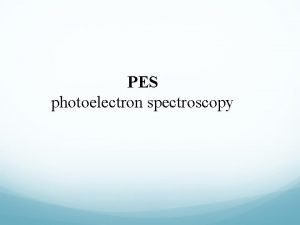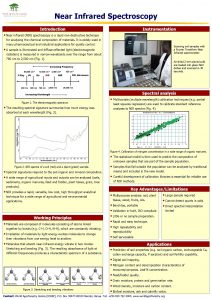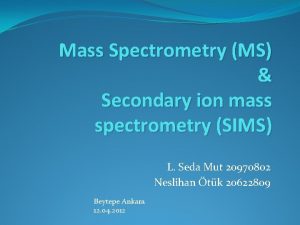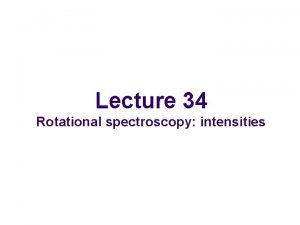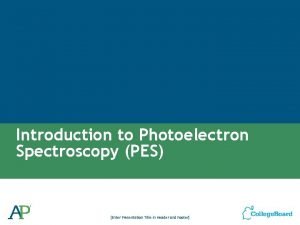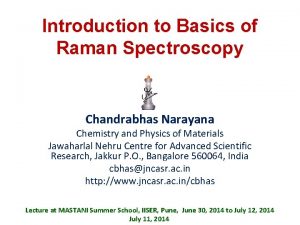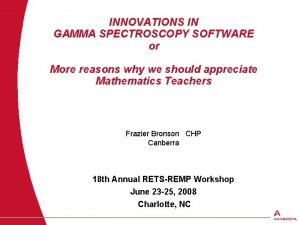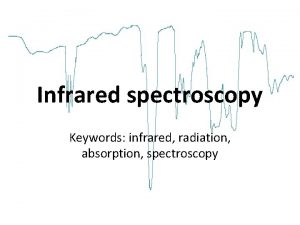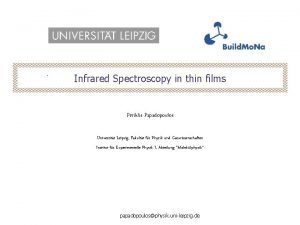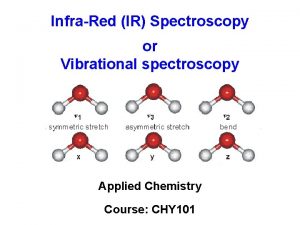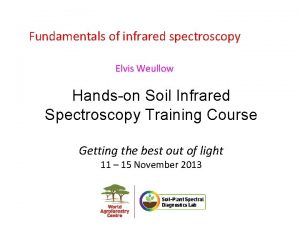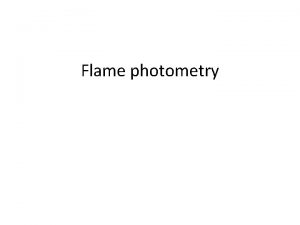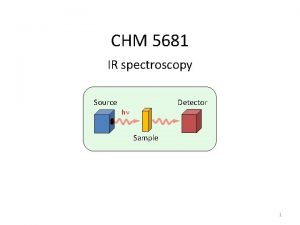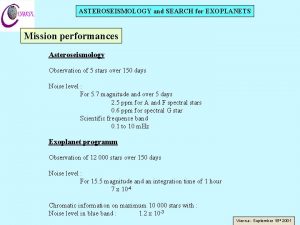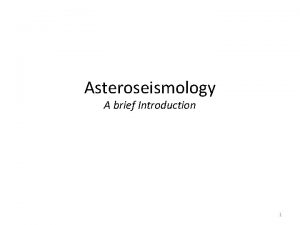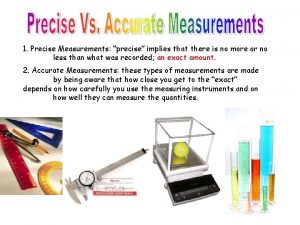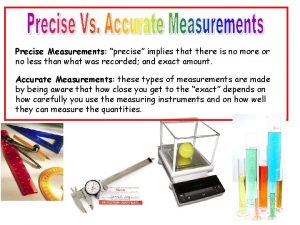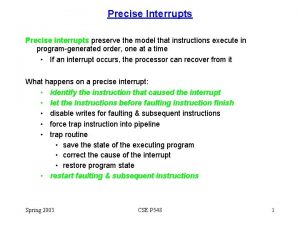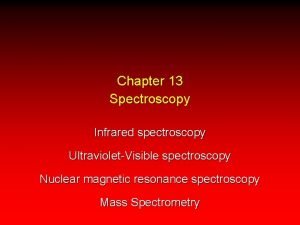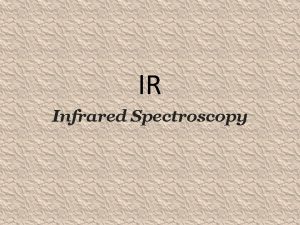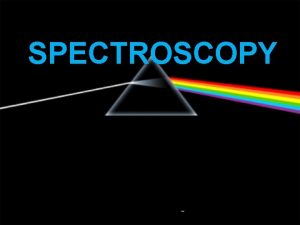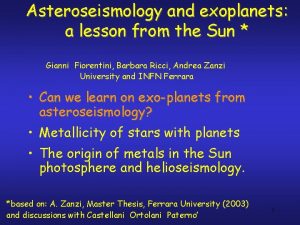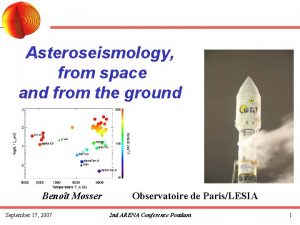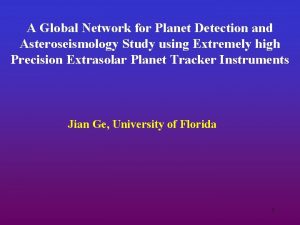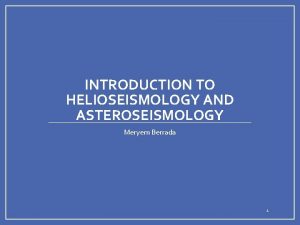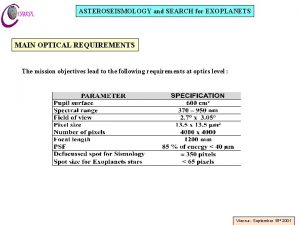Precise spectroscopy and asteroseismology of Algoltype and ro




























































- Slides: 60

Precise spectroscopy and asteroseismology of Algol-type and ro. Ap stars Mkrtichian D. ARCSEC, Sejong Univ. , Korea/ Odessa Nat. Univ. , Ukraine In collaboration with: A. Hatzes, H. Lehmann & A. Gamarova (TLS, Germany) E. Rodriguez (IAA, Spain) E. Olson (Univ. of Illinois, USA) S. -L. Kim (KAO, Korea) C. Kim (Chonbuk Uni. , Korea) A. Kusakin (GAISH, Russia/Kazakhstan) A. Kanaan (Brasil)

Solar and stellar seismology: what is practical difference in the observations? We can not yet optically resolve the discs of distant main sequence stars! • For the case of the Sun it is possible to measure the intensity or Doppler shifts signals from selected parts of solar disc (~”) i. e. measure the spatial information about NRP (Spatial filters - Hill (1978), Christensen-Dalsgaard & Gough (1982) • For slowly rotating stars information is disk-averaged.

The range of detectable modes in Sun : l, m<1000 in stars: l, m<4 The basic problem of observational is: asteroseismology that should be solved NRP mode – detection and identification problem All existing mode-identification methods for stars are based on information about the contributions from different parts of optically unresolved stellar disk extracted somehow from the disk-integrated light, line-profile, or radial velocity variations. The power of each of method for NRP mode identification is determined by how precisely it can select these spatial contributions in practice.

“Star as a Sun” observations are possible? In my talk (on Algols and ro. Ap stars) I will show that: • using pecularities inherent to different types of pulsating stars it is possible to gain 2 -D (l, m) and 3 -D spatial information about NRPs • using NRPs it is possible to gain new information about of physics, evolution, rotation and atmospheric structure of these stars

Pulsations in Algols: new methods of studies Definition of a new group of o. EA (oscillating EA) stars: "The A-F spectral type mass-accreting Main Seguence pulsating stars in a semi-detached Algol-type systems» (Mkrtichian et al. 2002) Remarkable peculiarity of o. EA stars is co-existence of pulsation and accretion!

Structure of gas flow and envelope in Algol-type binary 2 D hydrodynamic simulations Secondary Primary (o. EA) K 3 IV Gas stream F 1 V Gas stream-star impact zone Orbital Separation Unites Circumstellar envelope

List of o. EA stars (results of 3 years of cooperation) ____________________________________________ System Sp P (orb) (days) P (puls) Reference (min) _____________________________________________ Y Cam A 7+K 1 IV 3. 3055 95. 7, 78. 8 Kim et al. (2002 a) AB Cas A 3+K 0 IV 1. 3669 83. 93 Rodriguez et al. (1998) RZ Cas A 3 V+KOIV 1. 1953 22. 43, 25. 44 Mkrtichian et al. (2002) R CMA F 1 V +G 2 -K 2 IV 3. 864 68. 5 Mkrtichian & Gamarova (2000) AS Eri A 3 V+K 0 III 2. 6642 24. 39, 23. 01, 23. 34 Mkrtichian et al. (2003, in press) TW Dra A 6+K 0 IV 3. 922 80 Kusakin et al. (2001) RX Hya A 8+K 5 2. 2816 74. 26 Kim et al. (2002 b) AB Per A 5+G 9 IV 7. 1602 282. 02 Kim et al. (2002 c)

Instability strip for o. EA stars: Being in the past ZAMS stars that have started their evolution in a detached binary system, and later have undergone fast evolution during a rapid mass-transfer phase when the former massive and rapidly evolving component overfills it’s Roche lobe and mass-transfer has started. SMT RMT MS Dotted line: An example of evol. of 1. 8 M(sun) mass-accreting component in binary system During the Rapid Mass Transfer/ Accretion phase evolutions the gainers move to the domain of higher mass and luminosity stars and sit in the H-R diagram closer to the ZAMS. -

o. EA stars are not the normal MS Delta Scuti stars: Basic differences of o. EA stars with respect to the Delta Scuti-type stars and Delta Scuti stars in detached binaries: • Previous of rapid • They are thermal • They are evolutionary life: they are remnants mass-transfer phase in close binaries. still accreting the mass and are in inbalance. evolving along (!!) the MS In this sense they are attractive for asteroseismic studies.

Eclipse NRP mode-identification spatial structure of NRPs: l, m quantum numbers l=6, m=0 modes l, m =6, 3 modes l, m =6, 6 modes

Eclipses provides the unique possibility for mode – identification using the transit effects on NRP amplitudes and phases. l=4, m=0 o. EA star The geometry of the eclipse is accurately known from the solution of photometric light curve and RVs. The secondary star acts as geometric periodic spatial filter (PSF) with a timely variable shape that produces specific pulsation amplitude and phase changes of NRP depending on the mode’s l, m, n quantum numbers and the geometry of eclipse in binary system. Main adjustable parameters in modelling are mode quantum numbers, l, m, and the surface pulsation amplitude of the mode

The Modeling of eclipse effects: • Fig. 1. Theoretical modeling for system RZ Cas. The extracted pure pulsational light curve was simulated for prograde NRP mode l=3, m=-3. Above the graph the different phases of eclipse are shown.

Mode identification in the o. EA star AB Cas: modelling Considered pulsation characteristics: • Gain factor is the ratio of the observed pulsation amplitudes during the eclipse of pulsating component to the amplitude outside the eclipse: • Pulsational phase shift : tmax - the time moment of observed maximum; t 0 - predicted by the pulsation ephemeris time of maximum; Ppuls - the observed pulsation period. l=1, m=+1 mode

Mode identification in the o. EA star AB Cas: observations

Important Result from NRP modelling and observations: • Amplitude and phase variability during eclipse phases are the sensitive indicators of the spatial structure (l, m) of modes and helps to discriminate the NRP modes. • Amplitudes of some modes (l, m, n) are photometrically invisible or have small amplitudes in out-of eclipse orbital phases. During Min I they may increase their apparent pulsation amplitudes (the gain factor). • The ascending branches of Min I are affected by effects of gas-stream and envelope attenuation on NRPs. By these reasons the descending branches of Min I are the more optimal for comparison with the results of NRP modelling.

What new tools does asteroseismology bring to the studies of binaries? Spin Rotation of components and asynchronicity problem: Theory predicts synchronization of components in binary systems, but there are many asynchronized Algols

2 -D hydrodynamic simulations, Nazarenko &Mkrtichian (in prep) Mass-loss Mass accretion Mass-loss Asynchronism in Algols is due to angular momentum transfer during high accretion transfer-rate episodes? and/or it is apparent and caused by accretion stream that spin up of the surface layers (differential rotation)?

Hypothesis I. Asynchronous Algols are young Algols (t<106 years) that recently finished RMT phase and just settled on the slow mass-transfer phase . They are not yet synchronized. Problems: • We can not estimate from observations ages of Algols (as it is possible for normal stars using evolutionary tracks)

Hypothesis II: The asynchronism that is determined on <v sin i> is overestimated and is due equator-on visibility of all Algols and strong accretion driven differential rotation of very surface layers or is effect of the rapidly-rotating optically thick quasi-stationary accretion disk or equatorial bulge Problems: • We could not measure spectroscopically differential rotation or internal rotation of prime component, the spectral lines are the superposition of atmospheric and envelope absorption and emission lines

Hypothesis III. Asynchronism is due to rapid mass-transfer episodes during SMT phase and high rates of angular momentum transfer. Problems: • We have not good photometric or spectroscopic methods to prove the existence of rapid mass-transfer episodes • Analysis of the orbital period O-C variations is not good tool for study of angular momentum transfer.

For check theories of asynchronicity and evolution we need new methods in: • Accurate mass accretion rate determinations and observational detection of high-mass transfer/accretion episodes forced by the magnetic activity of secondary companion. • Accurate determination of rotation periods of components • Detection and measurement of accretion driven differential rotation of surface layers • Ages of Algols on a slow mass-transfer phase

New asteroseismic tools for studies of Algols (Mkrtichian et al. , 2002) • Rotational NRP mode splitting is an accurate tool for asynchronicity measurements (see AS Eri) • Difference in NRP mode splitting of low and high-degree modes gives the information about the accretion driven strong differential rotation of surface layers (to be detected) • Accretion driven pulsation period changes may be used for determination of mean accretion rate (to be detected). • The high-rate accretion episodes result in a puls. period jumps and/or rapid modal pattern changes ? (is probably detected)

Pulsation period changes with increasing the mass of star: • • P=Q M-0. 5 R 1. 5 R ~M α α≈ 0. 55 for ZAMS stars M>M(sun) P~QM 1. 5α- 0. 5 d. P/dt 1/P=d. Q/Q + 0. 325 d. M/dt 1/M for idealized case the pulsation period should increase with a increasing the mass of star (what is expected for MS stars) But response of mass-accreting star is non-linear and for given (M, R) depends on mass-accretion rate (Ulrich &Burger 1976, Kippenhahn &Meyer-Hofmeister (1977)

Expected accretion driven pulsation period changes (based on evol. binary models of De Greve 1993) M-R relations for gainers in evolutionary models of 3. 0 M +1. 8 M and 3. 0 M + 2. 7 M Algol primaries, evol. models of De Greve, (1993). Accretion driven mass (upper panel) changes in a 3 M +2. 7 M evolutionary model of De Greve (1993) and calculated pulsation period changes of the fundamental radial mode (bottom panel) (Mkrtichian, 2003 submitted)

The accretion-driven pulsation period changes d. P/dt expected in gainers will be (Mkrtichian et al. 2002): • • Negative (10 -5 -10 -7) Negative (10 -7 – 9) Close to zero Positive at at end of Fast Mass Transfer phase beginning of Slow MT phase middle of Slow MT phase late stages of Slow MT phase Theoretical d. M/dt - d. P(puls) / dt relations could be found for slow mass -transfer phase for gainers using the evol. models. Accretion rate estimations could be found from pulsation period (O-C) variability d. P(puls)/dt vs d. M/dt for slow masstransfer phase for 2. 7 M gainer Episodes of high-mass tranfer rates due to magnetic activity of secondary late-type star could be dectected as pulsation period jumps or changes of modal pattern in the pulsations.

Asteroseismic Rotation Period and Asynchronicity determination in AS Eri Discovered as a rapid pulsator (P=24 min) in 1999 yr (Gamarova Mkrtichian & Kusakin, 2000) 2000 yr multisite Euro-Asian (Spain -Kazakhstan-Korea) campaign (PI, Mkrtichian) Pulsation light curves (extracted)

P(orb) = 2. 664152 days AS Eri pulsation spectrum v sin i 35 km/s ; i= 82. 98 R=1. 57 R F(asyn) 1. 175 (spectroscopic) F(asyn) =1. 185 (asteroseismic) P(rot) 2. 27 d (spectroscopic) P(rot) = 2. 2477 d (asteroseismic) f 1 = 59. 0311± 0. 0001 c/d (l, m, n) = (2 or 1, -2 or -1, 5) Mode identification: f 2 = 62. 5633 c/d (l, m, n) = (2, -2, 6) l=2, m=0 and m=-2 f 3 = 61. 6732 c/d (l, m, n) = (2, 0, 6) f 2 -f 3=0. 8898 2 F(asyn)P(orb)= 2 P(rot) = -m. P(rot) mode splitting

Accuracy of seismic estimations of rotation, asynchronism and accretion: • The seismic estimations of rotation periods and asynchronism of primary o. EA star are as accurate as the measured pulsation periods. For a several month long duration observations the accuracy is of order values of 10 – 5. • This means that we have a very precise tool for the study of of rotation periods in the primary components of Algols and hence asynchronicity and a precise estimation of mass-accretion rates.

1997 -2001 yr studies of key object RZ Cas system (A 3 V+K 0 IV) Discovery of pulsations - Ohshima et al. 1998, 2001 P=22. 4 min, semi-amplitude 0. 01 mag Multi-site campaigns: • 1997/1998 (ph. ) Japan (PI, Ohshima) • 1999 (ph. ) USA, Spain, Ukraine, Georgia, Kazakhstan, Korea (PI, E. Rodriguez) • 2000 (ph. ) Spain, Ukraine, Uzbekistan, Kazakhstan, Korea (PI, D. Mkrtichian) • 2001 (spe. + ph. ) USA, Spain, Germany, Ukraine, Kazakhstan, Korea (PI, D. Mkrtichian)

The 2 -D hydrodynamic simulations of mass-transfer in RZ Cas eclipsing binary (Nazarenko & Mkrtichian, in prep. ) Mass transfer rate ~ 10 – 8 M /yr = 1. 1 K 0 IV A 3 V = 0. 9 Orbital separation units Hydrodinamic code, based on Large Particles Method (Belotserkovsky & Davidov (1982)

RZ Cas: pulsation story • 1997/1998 – monoperiodic oscillations 64. 19 c/d, semi-amplitude ~0. 01 mag • 1998/1999 – same as for 1997/1998 • 1999 -Oct. 24, 2000 same as for 1997/1998/1999 First, exciting results of 2001 multisite photometric campaign : a) the amplitude of pulsations decreases in order values(!) ( from 0. 01 to 0. 001 mag !!) b) the pulsation spectrum become multiperiodic(!) with at least 3 excited periods including the older one c) the amplitudes of all modes become variable (!).

RZ Cas NRP modal spectrum and its variability 1997 -2000 2001 Low amplitude multi-periodic oscillations Monoperiodic Oscillations Δm=8 -9 mmag No signal above 0. 6 mmag 2001 photometric campaign: The DFT amplitude spectrum of combined Mt. Laguna and Sierra Nevada Obs. photometry: The low amplitude (<0. 0015 mag) peaks between f= 30 - 64. 2 c/d (48 -22 min) are well visible. 1999 Sierra-Nevada Obs. Photometry (Rodriguez et al, in prep. )

The reasons of a such drastic changes in RZ Cas ? Facts: • Delta Scuti stars do not show such a abrupt amplitude and modal pattern changes • Main difference between o. EA and DSCT stars is a mass-accretion process • The KOIV rapidly-rotating component of RZ Cas was found to be a flare star (two 0. 6 mag flares registered in 1996 and 2001). Magnetic activity?

L 1 point K 0 IV A 3 V I Are there active regions on the surface of cool star? Orbital separation units Rapid pulsator and accretor

The reasons of a such drastic changes in RZ Cas ? The rapid mass-accretion hypothesis: • Did the characteristics of the pulsations in the primary result from a rapid mass-transfer/accretion episode in 2000/2001, possibly resulting from magnetic activity on the secondary, rapidly rotating K 0 IV companion? • . . . Other reasons? Independent observational check of the increase of the masstransfer rate in Nov. 2000/2001: • It should be a strong, transient circumstellar envelope around the primary in 2001 (spectral and photometric manifestations? )! • It should be jump or change (increase) in the orbital period (O-C diagram)!

Yes!!! O-C diagram of RZ Cas show period jump on +1 sec since Nov. -Dec. 2000, K. Tikkanen (private com. , March 2003) http: //www. student. oulu. fi/~ktikkane/AST/RZCAS. html Nov. / Dec. 2000 O-C (min) Orbital cycles

RZ Cas: (Seismic) Life Story in 2000/2001: November-December 2000: 1. The abrupt mass-transfer episode occur due to the magnetic activity secondary K 0 IV star. 2. The prime component have accreted at least 50% of transferred mass (and change its internal resonance properties? ) 3. Due to angular momentum transfer and loss during the episode the orbital period of binary system become longer on 1 sec!!!! December 2000 -September 2001: 1. The internal resonance properties of A 3 V component were changed? 2. The mode selection mechanism started to search for new combinations of pulsation modes close to the resonance? ! 3. The dominant mono-periodic oscillation was shifted on multi-periodic and the amplitude of dominant mode drops to 0. 001 mag

2001 year spectrocopic timeseries observations of RZ Cas (Lehmann & Mkrtichian (A&A, submitted) N=970 spectra (R=40, 000, S/N~200 ) in 12 nights in October at the 2. 0 m tel. of TLS Tautenburg. The complete orbital period was covered 3 times, time sampling ~200 sec. Accuracy of of RVs 110 m/s for primary, 1. 5 km/sec for secondary: New accurate RV orbit and masses of components were obtained : m 1 sin 3 i=1. 85 +/- 0. 02 M m 2 sin 3 i=0. 656 +/- 0. 006 M m 1 / m 2 =2. 814 +/- 0. 009 Anomalous rotation effect (Schlezinger. Rossiter-Mc. Laughlin effect) in primary component

The anomalous Schlesinger-Rossiter effect can be explained by different limb-darkening at phases (0. 9 - 1. 0) and (1. 0 -1. 1) of Min I that is due to attenuation effect of a asymmetric circumstellar envelope. Cross- section of gas-density distribution (in 2 D hydrodynamic simulations) through primaries environment at orbital phase 0. 75. The integrated total number of particles seen from phase 0. 25 is about 10 -20 times lower than the number seen from phase 0. 75.

During Sept. /Oct. 2001 orbital modulation of pulsational RV amplitudes of both modes was detected Phase diagram for the amplitudes of f 1=64. 19 c/d (solid line) and f 2=56. 6 c/d modes.

The pulsation amplitudes of both modes are maximal at orbital phase ~ 1. 1, and goes to minimum at phases 0. 6 -0. 9 - = 1. 1 K 0 IV A 3 V = 0. 9 Orbital separation units

Gas stream and assymetric envelope as a spatial filter for NRP in RZ Cas • Large amplitude of puls. RV orbital modulation reflect the sectoral l=|m| nature of NRPs having the maximal amplitudes in equatorial zone. • Shape a amplitude modulation gives a information about density variations of gas-envelope. • It is max. at phases 0. 9 and min. at 0. 1 both in agreement with 2 -D hydrodynamic simulations.

Conclusions on Algols • The Min I eclipse effects on NRP amplitudes and phases helps us find unique and accurate solutions for (l, m) mode identification. This makes o. EA stars very attractive objects for asteroseismic studies of their internal structure. • Multisite and space-based studies of NRP modal spectra should provide precise measurement of the rotation periods of stars, accretion driven differential rotation, and asynchronism at essentially higher accuracy levels then was done so far. • Long-term study of pulsation period changes in o. EA stars give us understanding of Algols ages and the possibility of accurate asteroseismic determination of mass-accretion rates. • o. EA stars are the unique laboratories of stellar physics and asteroseismology.

Precise spectroscopy of ro. Ap stars. Some well known facts about ro. Ap stars: • • Strong chemical anomalies (up to +4. 0 dex), spotty distributions of elements (see maps in Hatzes, 1990) Strong (~kilogauss) dipole magnetic fields Excited high-overtone low amplitude (<5 mmag), low degree dipole(? ) p-modes (5 -15 min), pulsation axis coincides with magnetic axis (Kurtz, 1990) Oblique pulsator model (Kurtz & Shibahashi, 1986)

Periodic spatial filter (PSF) concept for NRP mode detection (2 -D concept) (Mkrtichian 1994, Solar Physics, 152, p. 275) Si abundance spots Cr pseudo-mask “ro. Ap star as a Sun” observations: Si pseudo-mask

Modelling of sensitivity functions of PSFs associated with the surface abundance spots (Mkrtichian, Hatzes & Panchuk 2000) Outside spot Inside spot NRP Sensitivity function for Cr spots with different overabundances Intensity of Cr lines

Oblique pulsator model (HR 3831) with a polar abundance spots • RV amplitude and phase modulation for NRPs depends from geometry , coordinates and overabundances in spots • NRP (l, m=3 -10) mode detection using spectral lines of overabundant elements 10100 times more sensitive than photometric detection • The PSF technique is capable of the detection of l =3 -10 NRP modes in ro. Ap.

Project “Asteroseismology with spatial resolution” Start: 1997 PIs: A. Hatzes (Mc Donald Obs. ) & Mkrtichian (Odessa Univ. ). First results of project: Used telescopes: 2. 7 m and 2. 1 m Mc. Donald Obs. (USA), 6. 0 m tel. SAO(Russia) Stars observed with iodine absorption cell : γEqu, HR 1217…. . Detected of RV pulsations in ro. Ap stars: 33 Lib, HD 134214, HD 122970, 10 Aql Results on HR 1217 and 33 Lib should be given now in details:

HR 1217 - “broad-band” RV data: Dec. 1997 -Febr. 1998 (2. 7 m tel. Mc Donald Obs. , USA)

First results on HR 1217: • Detection of two new excited equidistant modes, total number of detected modes N=9 “Enigmatic” mode New modes

HR 1217 echelle-diagram of p-mode spectrum “Enigmatic” mode Echelle-diagram of l=1 -4 p-mode spectrum of the model L from Gautschy et al. (1998)

Rotational amplitude and phase modulation

Conclusions on HR 1217: • • 9 frequencies in the p-mode spectrum: 8 are equidistant f 7 frequency is probably relate to l=4 mode Amplitude modulation of f 2 and f 4 mode is in agreement with oblique pulsator model. Phase modulation is in disagreement with simple oblique pulsator model

ro. Ap star 33 Lib: Detection of atmospheric standing waves and acoustic node Method of vertical atmospheric sounding: RV Doppler shift measurements of lines formed at different depths Transformation scale EW-log τ

We use line-by-line analysis of Doppler shifts Nd III line RVs

The histogram of pulsation phases

Two oppositely pulsating layers: Week Nd II lines: log tau < -4. 0 Strong Nd. III lines: log tau >> -4. 5

Schematic of acoustic cross-section Reflecting layer in upper atmosphere? Formation of Nd III lines Formation of week lines Lower atmosphere

33 Lib: Acoustic cross-section of lower atmosphere Standing + running wave components?

Conclusions: on 33 Lib • • • This is a first application of acoustic cross-section methods (2 -D +3 rd Dimension). The time coverage is short (2 hours), accuracy of phases is not high We found the oppositely pulsating layers in lower and upper atmosphere and acoustic node above log tau> -4. 5. Nd. III lines are formed at superficial layers that support the prediction from diffusion theory
 Universal armament interface
Universal armament interface Precise language definition
Precise language definition Preciseid
Preciseid What is precise in mathematical language
What is precise in mathematical language George gray
George gray Precise measurements are always accurate
Precise measurements are always accurate Part of thesis
Part of thesis Accuracy definition in chemistry
Accuracy definition in chemistry Precise verb
Precise verb Precise verb
Precise verb Precise verb
Precise verb The most precise random sampling is usually done from
The most precise random sampling is usually done from Significant figures of whole numbers
Significant figures of whole numbers Precise interrupt
Precise interrupt Micrometer experiment
Micrometer experiment Which of the promotion methods is the most precise
Which of the promotion methods is the most precise Forthright tone
Forthright tone Michael cue bid
Michael cue bid Why is precise communication crucial in science
Why is precise communication crucial in science Multiplying and dividing scientific notation worksheet doc
Multiplying and dividing scientific notation worksheet doc Precise
Precise Abstracts vary by discipline
Abstracts vary by discipline Precision and accuracy
Precision and accuracy What is precis
What is precis A political community in a precise territory
A political community in a precise territory Concise precise
Concise precise Terahertz spectroscopy principles and applications
Terahertz spectroscopy principles and applications Ftir spectroscopy theory
Ftir spectroscopy theory What is the difference between ftir and raman spectroscopy
What is the difference between ftir and raman spectroscopy Difference between ir and raman spectroscopy
Difference between ir and raman spectroscopy Nmr associates
Nmr associates Stretching and bending vibrations in ir spectroscopy
Stretching and bending vibrations in ir spectroscopy Advantages and disadvantages of spectroscopy
Advantages and disadvantages of spectroscopy Introduction to spectrophotometry
Introduction to spectrophotometry Application of uv visible spectroscopy
Application of uv visible spectroscopy Spectroscopy
Spectroscopy Stretching and bending vibrations in ir spectroscopy
Stretching and bending vibrations in ir spectroscopy Advantages and disadvantages of spectroscopy
Advantages and disadvantages of spectroscopy Difference between atomic and molecular spectroscopy
Difference between atomic and molecular spectroscopy Difference between atomic and molecular spectroscopy
Difference between atomic and molecular spectroscopy What are the different types of spectroscopy
What are the different types of spectroscopy What is spectroscopy
What is spectroscopy Woodward fieser rules
Woodward fieser rules Beer's law explained
Beer's law explained Solid sample preparation for ir spectroscopy
Solid sample preparation for ir spectroscopy Prinsip alat aas
Prinsip alat aas Objectives of spectroscopy
Objectives of spectroscopy How does pes work
How does pes work Nir spectroscopy instrumentation
Nir spectroscopy instrumentation Uses of mass spectroscopy
Uses of mass spectroscopy Gross selection rules
Gross selection rules Pes2p
Pes2p Dept nmr spectroscopy
Dept nmr spectroscopy Raman spectroscopy basics
Raman spectroscopy basics Ortec renaissance
Ortec renaissance Infrared spectroscopy
Infrared spectroscopy Periklis papadopoulos
Periklis papadopoulos Ir spectrum of aromatic ring
Ir spectrum of aromatic ring Ir instrumentation
Ir instrumentation Principle of flamephotometry is
Principle of flamephotometry is Dispersive ir spectroscopy
Dispersive ir spectroscopy





